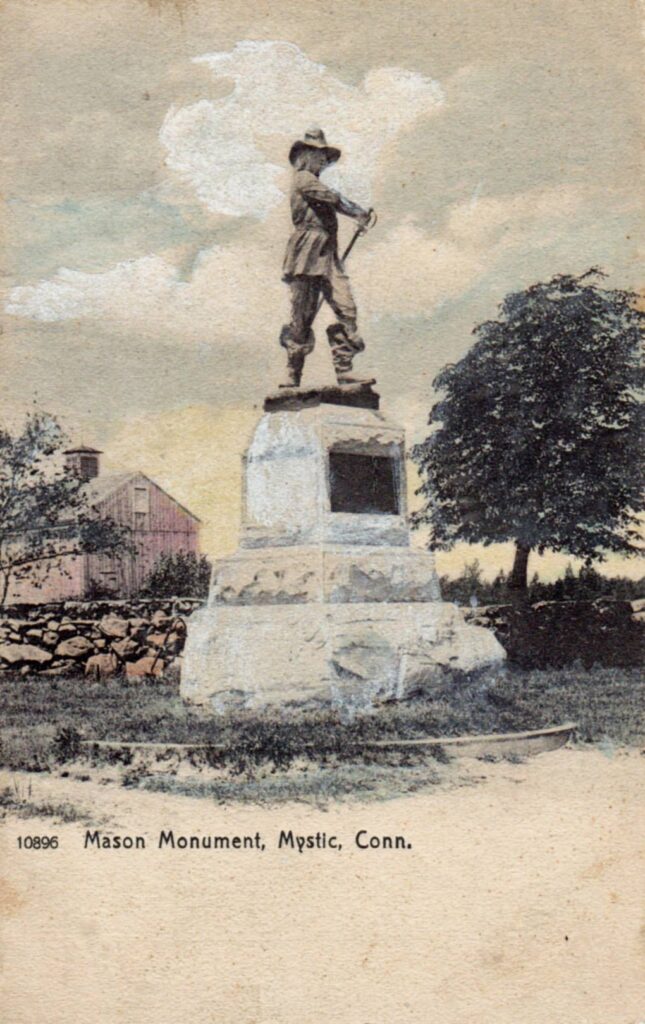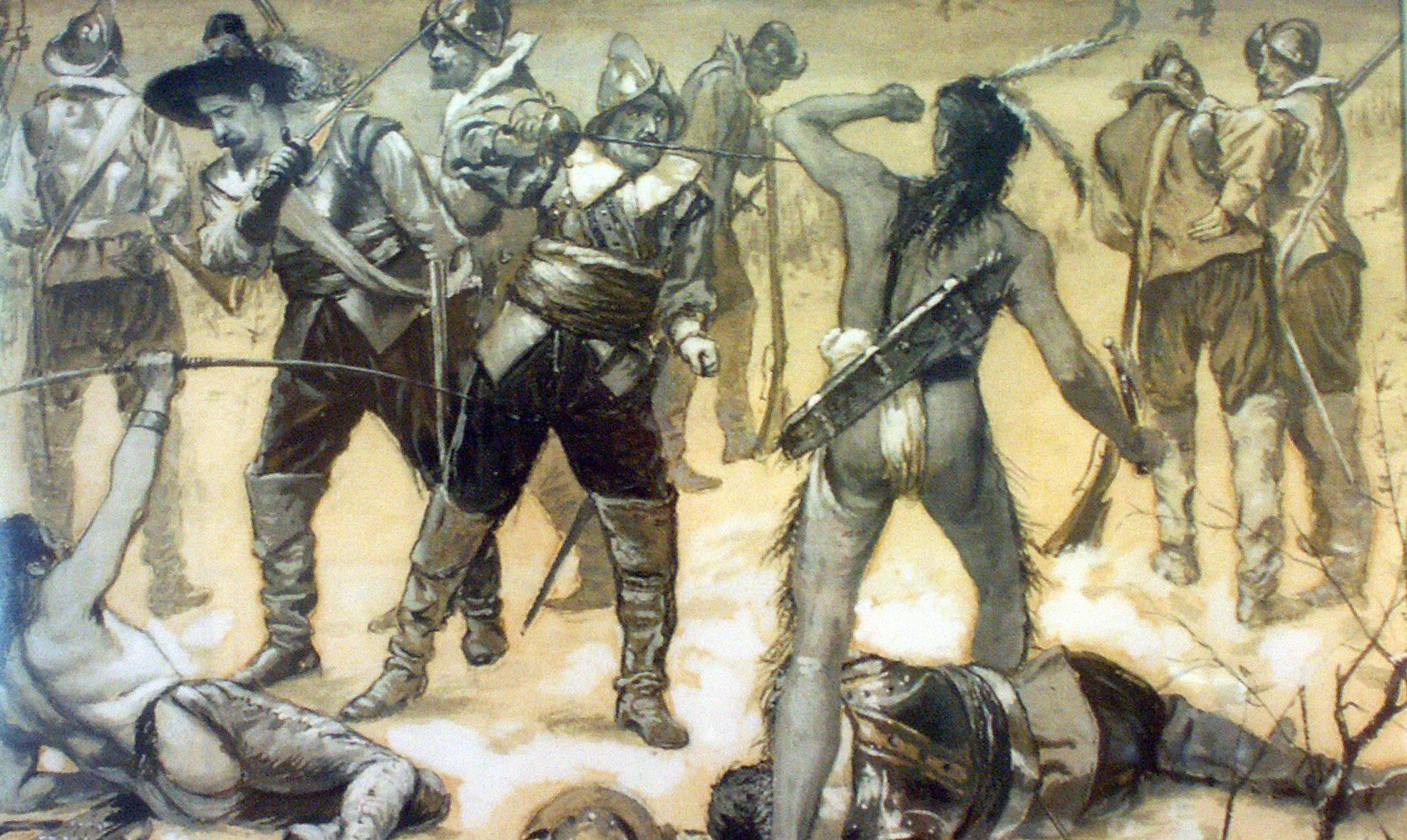Now that Thanksgiving is over and today is Native American Heritage Day let’s look at what happened after that peaceful gathering in Plymouth in 1621.
During my early years of schooling in Wisconsin, I learned of how Native Americans welcomed new immigrants and taught them to plant corn and catch eel and thus survive in the New World. Relations between the Native Americans and the Puritans appeared to be good and the two co-existed. Fast forward a few chapters in my history book and I learned that Native Americans were being gunned down as the descendants of these immigrants were embarking on their Westward Expansion. What happened in between? How did the love fest that started at Plymouth go so wrong?
I can blame my ninth great grandfather for being instrumental in what the History Channel calls one of ’10 Days That Unexpectedly Changed America’. And yet I never learned of it in my school history lessons.
Grandpa John Mason was born in Oxfordshire in 1600 and became a military man. He fought with the English army as an officer on several campaigns and then came to Massachusetts in 1632 perhaps to avoid religious persecution as he was a Puritan. He became a freemason and after a few years left the Massachusetts Bay Colony and moved to Connecticut, where he was appointed captain and led the Connecticut militia.
Trouble was brewing amongst the local Pequot Indians and the Puritan leadership in Massachusetts ordered Captain John Mason and Captain John Underhill to muster together a force of Connecticut militia and ‘friendly’ Narrangansetts and Mohegans to quell the rowdy Pequots.
Mason and Underhill did more than quell the Pequots. They annihilated them. They massacred them. On the morning of 26 May 1637, the English settlers with their allies stormed the Pequots while they slept in their fortified village at Mystic River. A dog alerted the Pequots who woke up to find the attackers entering the two gates. Mason and Underhill underestimated the Pequot resistance and Captain Mason went for Plan B. He ran into a wigwam and lit a torch from the hearth and proceeded to burn the village. Those Pequots who didn’t burn to death were shot or stabbed while trying to scale the walls of the fort to escape.
When the smoke subsided and the swords were laid to rest, the settlers found up to 700 dead Pequots, most of them women and children. In subsequent clean-up missions the soldiers sought out the remaining Pequots and with the help of European diseases came very close to exterminating the once-powerful tribe.
The Puritan leadership touted Mason and Underhill as heros for conquering the ‘satanical savages’. The massacre sent a strong message to other Native Americans that God had sent the Puritans to create a ‘City on the Hill’ in the New World and they were there to subjugate the infidels. All that lovey dovey stuff between the Pilgrims and the Wampanoag at Plymouth in 1621 was but a distant memory. The course of history changed forever after the Mystic Massacre.
Mason was promoted to Major and later founded present-day Norwich, Connecticut and married a minister’s daughter and had a large family and countless descendants including me. A statute was erected in his honour near the site of the Mystic Massacre and he was revered as the ‘Conqueror of the Pequots’.
Modern-day history revisionists though aren’t so kind to Mason. In fact many historians declare what the Puritans did was genocide. The issue isn’t the war against the Pequots – that may or may not have been justifiable. The issue is the massacre of non-combatants – the women and children. Mason’s statute stood near the location of the Mystic fort for 103 years but was relocated to a less prominent place in 1993 due to the sensitivities of his actions.
I told this story to my son, Joseph, and he chose it as a topic for his International Baccalaureate’s Extended Essay. His research question was ‘How did the Puritans use their faith to justify the massacre of the Pequot Indians at Mystic River on 26 May 1637?’ There’s too much there for a Facebook post but it is a fascinating read about the Puritan’s faith and their beliefs in divine intervention, David’s wars and Old Testament antecedents, God’s providential plan for New England and Puritanical beliefs that native Americans were descendants of the devil.
The events of Mystic River in 1637 ring true today. Then we had a people whose interpretation of their holy writs gave them justification to do things we now see as unacceptable. Not unlike some fundamentalists today. And we mustn’t overlook the fact that the Puritans/Pilgrims were political/religious refugees – a hotly debated topic in the United States now and one I addressed in a previous post.
I’m not proud to be a descendant of John Mason but there’s not much I can do about that. He acted within the norms of the day and felt what he did was right. I can however right the wrongs of my ancestors by respecting people of all faith and accepting that we are all equal.


